
- Our CEO Master Executive Coach
- Our Consulting Team & Coaches
- Our Advisory Board
- Our Strategic Partners
- Client Testimonials
- Abstract of Second Edition Book
- Second Edition Book
- First Edition Book
- NextGen Book
- Second Edition Book (2023)
- First Edition Book (2020)
- NextGen Book (2019)
- Board & CEO Advisory Services
- Organizational Transformation Framework
- Culture Development
- Talent Management & Succession Planning
- Digital Transformation
- Post-Pandemic Recovery
- Crisis Management
- Cognitive Readiness
- Leadership 360 Assessments
- L.E.A.D.E.R. Framework
- C.R.I.S.I.S. Model
- R.B.L. Framework
- Goleman’s Leadership Framework
- Goleman’s ESI Framework
- SCORE™ Framework
- Paragon⁷ Framework
- R.E.D. Model
- A.D.A.M. Model
- G.R.O.W. Model
- A.R.T. Framework
- HPLD Framework
- Keynote Presentation
- CEO & C-Suite Executive Coaching
- Disruptive Leadership Masterclass
- Crisis Leadership Masterclass
- Critical Thinking Bootcamp
- Prophetic Leadership Masterclass
- HiPO Development Program
- Program for Advanced Leadership & Management (PALM)
- MBA in Disruptive Leadership
- Udemy Online Training
- Skillsoft E-learning
- White Papers
- Research Reports
- Online Resources
- IPMA Journal
- LinkedIn Posts
- Singapore Business Review
- The Straits Times Forum

Importance Of Cognitive Readiness Competencies (Advanced Critical Thinking Skills) In Today's Disruptive And Digital-Driven Workplace
We at the Centre for Executive Education (CEE) through our ongoing longitudinal research with various strategic partners globally , believes that for leaders to succeed in Fourth Industrial Revolution (IR 4.0), which is termed by World Economic Forum (WEF) founder, Dr Klaus Schwab; they would need to demonstrate effectively the cluster of cognitive readiness competencies which would enable leaders to recognize patterns in chaotic situations, adapt or change problem solutions based on the patterns identified, and then effectively take action to implement the new solutions.
In today’s highly disruptive and digital-driven world, organizations continue to be impacted by a multitude of changes, influencing the way they operate. With increasing volatility in the markets, ever-changing customer needs, and continuous technology-led disruptions to business models, it is an organization’s agility and resilience that can help it weather the storm of changes that hit it every day.
On the other hand, the complexity and disruptions in the business environment today continuously decrease the visibility of businesses beyond a quarter, impeding organizations’ ability to build long-term plans and requiring them to reinvent continually.
The four elements of VUCA (see Figure 1) describe the “fog of war”—the chaotic conditions that are encountered on a modern battlefield. Its relevance to leaders in business is clear because these conditions are highly descriptive of the environment in which business is conducted every day (Bawany 2020) .
Figure 1: The Four Elements Of V.U.C.A.

EDA Paragon7 Cognitive Readiness Competencies
Figure 2: The Paragon7 Cognitive Readiness Competencies
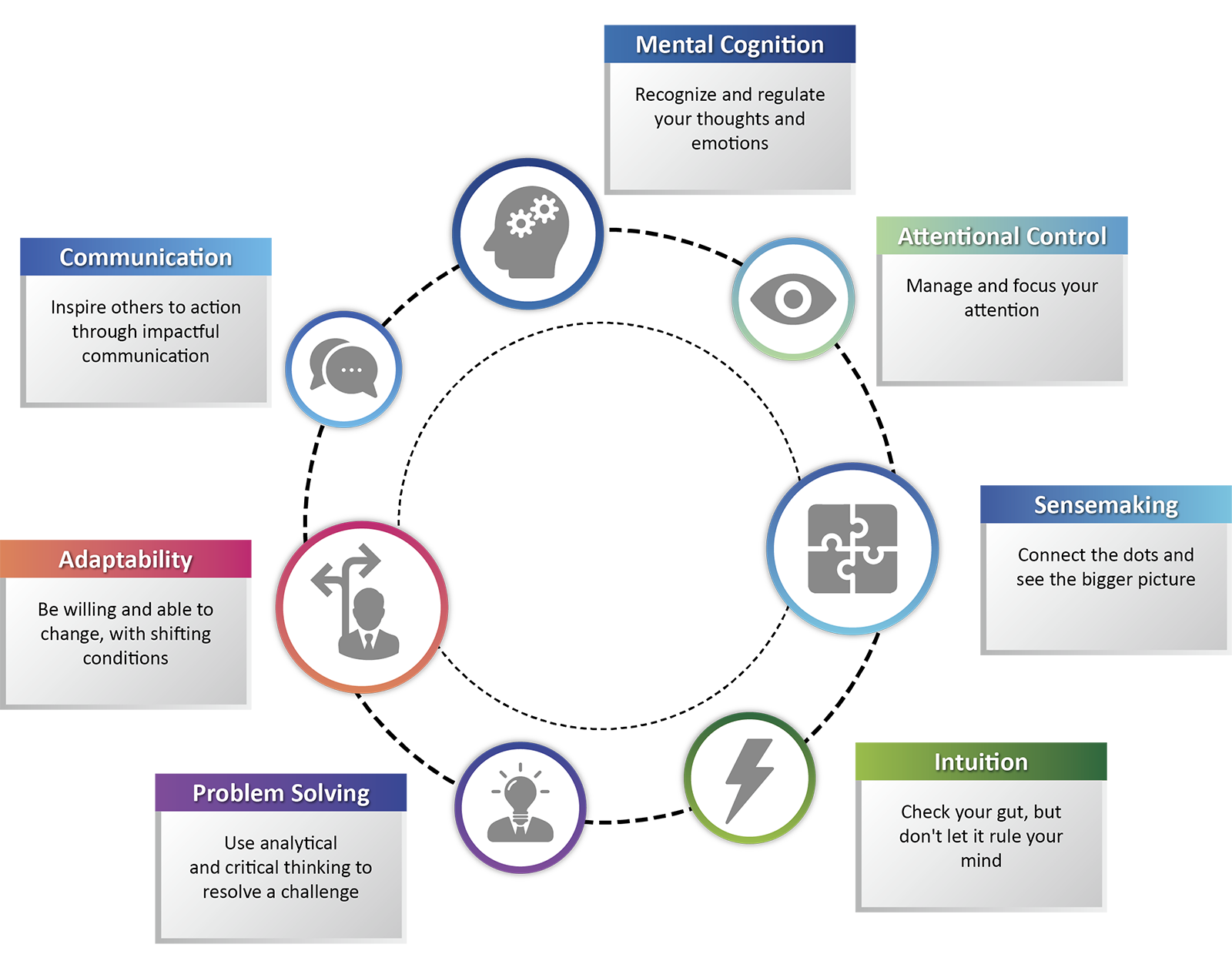
CEE’s global strategic partner, the Executive Development Associates (EDA) has identified the following 7 key cognitive readiness skills collectively known as Paragon7 (see Figure 2), which develop, enhance or sustain a leader’s ability to navigate successfully in this ‘new normal’: (Bawany, 2017)
- Mental Cognition: Recognise and regulate your thoughts and emotions
- Attentional Control: Manage and focus your attention
- Sensemaking: Connect the dots and see the bigger picture
- Intuition: Check your gut, but don’t let it rule your mind
- Problem Solving: Use analytical and creative methods to resolve a challenge
- Adaptability: Be willing and able to change, with shifting conditions
- Communication : Inspire others to action; Create fluid communication pathways
Leveraging On Cognitive Readiness For A Mentally Prepared Culture @ Google
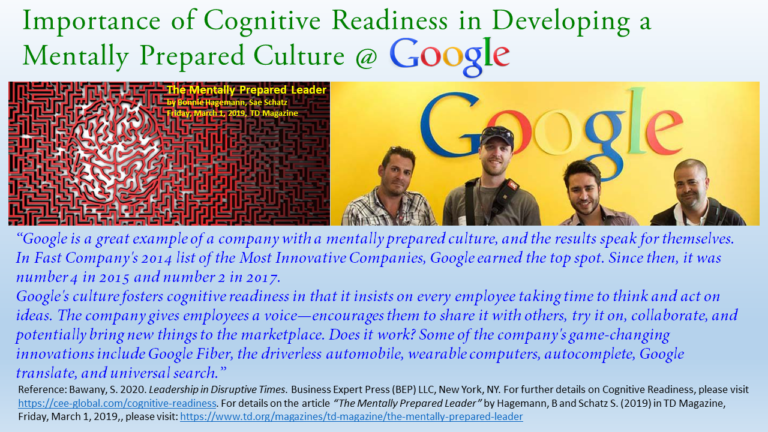
Making this shift is only the beginning. You must then shift the culture to be empowered and mentally prepared. Using a simple definition, if culture is “the way we do things around here,” then the idea of “thinking employees”—where each person from the CEO to the janitor is expected to exhibit superior decision-making skills—becomes a part of the culture. The importance of culture cannot be emphasized enough.
According to the National Association of Corporate Directors, “the oversight of culture must be a key board responsibility, as it is inextricably linked with strategy, CEO selection, and risk oversight.” (Hagemann & Schatz 2019)
Given that, what does a mentally prepared culture look like? Google is a great example of a company with a mentally prepared culture, and the results speak for themselves. In Fast Company ‘s 2014 list of the Most Innovative Companies, Google earned the top spot. Since then, it was number 4 in 2015 and number 2 in 2017.
Google’s culture fosters cognitive readiness in that it insists on every employee taking time to think and act on ideas. The company gives employees a voice—encourages them to share it with others, try it on, collaborate, and potentially bring new things to the marketplace. Does it work? Some of the company’s game-changing innovations include Google Fiber, the driverless automobile, wearable computers, autocomplete, Google translate, and universal search.
“L.E.A.P.” Through The Fog Of A Disruptive & VUCA World
Figure 3: The L.E.A.P. Framework For Managing Leadership Challenges Of A Disruptive & VUCA World
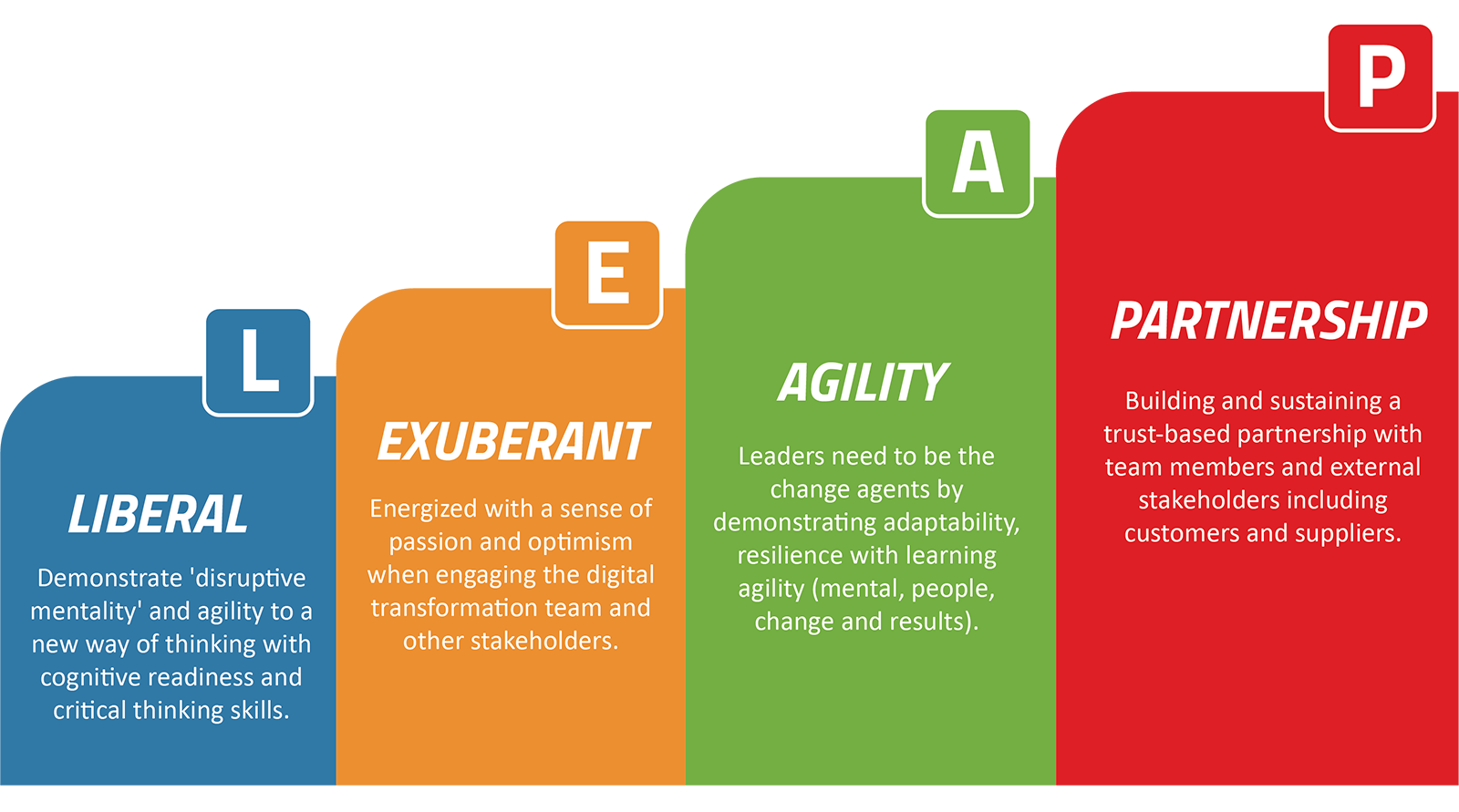
Liberal: A leader needs to exhibit liberal thinking (disruptive mental agility) with a breakthrough mindset that requires openness to developing new behaviours, skills, or opinions and the willingness to adapt or discard existing values if necessary to survive in the new normal. Leading in a disruptive environment means getting used to incredible levels of uncertainty. A leader will never know how something will work until they try it. Modifying their assumptions and adapting or revising their plans in accordance with the desired results is the standard practice of the most highly effective disruptive leaders.
Exuberant: Leaders that thrive in a disruptive environment are energized and demonstrate a sense of passion and optimism while being grounded in reality and in engaging the team and other stakeholders. They are optimistic and consistently look for the good in all successes, failures, and challenges. Passion is a sense of energy for something. A leader’s passion and purpose are their internal energy source, the fire or determination they have to reach their destination.
Agility: Leaders need to be change agents by demonstrating resilience with mental and learning agility. Learning agility is the ability and willingness to learn from every situation a leader goes through in life—including the ones where they have no idea what to do—and to find solutions by leveraging on cognitive readiness and critical thinking skills. The inability to adapt proficiently has often been cited as the reason for leadership derailers.
Partnership: Building and sustaining a trust-based partnership with employees, team members, and external stakeholders, including customers and suppliers, is crucial, especially during disruptive times. When people trust a leader, they have confidence in that leader’s decisions. Even in times of uncertainty, they will be influenced and supportive of the leaders. That is because they expect their leaders to do what the leaders say they will do.
The “R.E.D.” Model of Critical Thinking
Figure 4: the “r.e.d.” model of critical thinking.
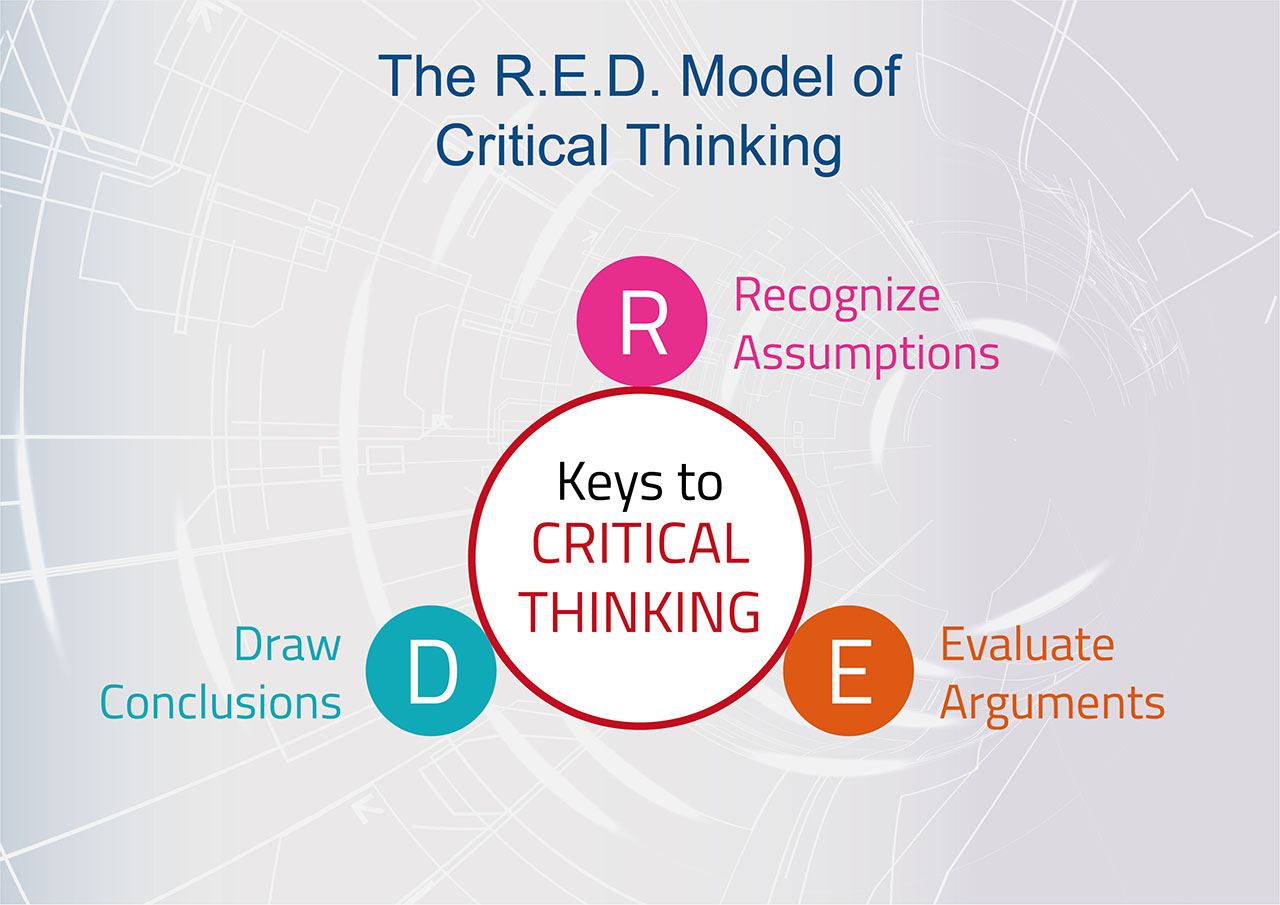
Reference: Bawany, S, (2023) “ Leadership in Disruptive Times: Negotiating the New Balance ” (Business Expert Press LLC, New York, NY)
Pearson has developed the following RED Model – Recognize assumptions, Evaluate arguments, Draw conclusions – as a way to view and apply Critical Thinking principles when faced with a decision. This model is particularly helpful in Critical Thinking training programs.
R ecognize Assumptions. This is the ability to separate fact from opinion. It is deceptively easy to listen to a comment or presentation and assume the information presented is true even though no evidence was given to back it up. Perhaps the speaker is particularly credible or trustworthy, or the information makes sense or matches our own view. We just don’t question it. Noticing and questioning assumptions helps to reveal information gaps or unfounded logic. Taking it a step further, when we examine assumptions through the eyes of different people (e.g., the viewpoint of different stakeholders), the end result is a richer perspective on a topic.
E valuate Arguments. It is difficult to suspend judgment systematically and walk through various arguments and information with the impartiality of Sherlock Holmes. The art of evaluating arguments entails analyzing information objectively and accurately, questioning the quality of supporting evidence, and understanding how emotion influences the situation. Common barriers include confirmation bias, which is the tendency to seek out and agree with the information that is consistent with your own point of view or allow emotions – yours or others’ – to get in the way of objective evaluation. People may quickly conclude simply to avoid conflict. Being able to remain objective and sort through the validity of different positions helps people draw more accurate conclusions.
D raw Conclusions. People who possess these skills can bring diverse information together to arrive at conclusions that logically follow from the available evidence, and they do not inappropriately generalize beyond the evidence. Furthermore, they will change their position when the evidence warrants doing so. They are often characterized as having “good judgment” because they typically arrive at a quality decision.
Each of these Critical Thinking skills fits together in a process that is both fluid and sequential.
When presented with information, people typically alternate between recognizing assumptions and evaluating arguments. Critical Thinking is sequential in that recognizing faulty assumptions or weak arguments improves the likelihood of reaching an appropriate conclusion. It is helpful to focus on each of the RED skills individually when practicing skill development. With concentrated practice over time, typically several months, Critical Thinking skills can be significantly increased.
Programs On Developing Cognitive Readiness And Critical Thinking Skills For Leaders At All Levels
We may not be able to increase IQ, but leaders can learn skills to enhance their overall critical thinking capabilities. Much like an athlete, critical thinkers can improve and be developed, but it requires effort, practise, and dedication.
Overview Of Critical Thinking Programs
Paragon7: critical thinking transcended.
The Paragon7 Program has never before been available to the corporate sector, but now business leaders can hone their decision-making skills, learn to take more rapid action, anticipate, adapt and be ready to expertly address whatever novel challenges they may face in the future. This training goes beyond traditional critical thinking training—it exponentially multiplies elite leaders’ mental potential so they can successfully confront ill-defined, high-intensity challenges in the complex, dynamic, and often-ambiguous modern business world.
Acuity follows readiness. Once leaders are ready for any challenge or situation, then they are open to new insights that will propel them forward by leveraging innovation, intuition, and creativity to shape reality.
Impact occurs when leaders cascade learning throughout their organizations. Paragon7 teaches leaders how to foster their teams’ cognitive capital, as well as implement processes for long-term sustainment.
Critical Thinking Boot Camp (CTBC)
The Critical Thinking Boot Camp (CTBC) is an intensive, 3-phase development process focused on learning practical skills that will have an IMMEDIATE impact on your bottom line. While there won’t be any push-ups or sprints, each attendee will be immersed in masters level, vigorous training on critical thinking. They will be assessed, will work on their real work-related issues and be kept accountable by a coach as well as your management team. Seventy-four per cent of participants say they applied new skills on the job!
Think RED Workshop
The Think RED Program introduces participants to critical thinking skills development through the presentation and application of the Pearson TalentLens RED Model: recognize assumptions, evaluate arguments, and draw conclusions based on an objective, clear-eyed appraisal of the available evidence. Multiple real-world examples and activities will be interwoven with content, enabling participants to immediately apply RED Model thinking skills to actual business challenges in problem-solving and decision making. This one day program is designed to serve as a stand-alone critical thinking tool, or as the foundation for further skills development through follow-up participation in our advanced critical thinking workshops.
Critical Thinking for Business Growth (CTBG)
The Critical Thinking for Business Growth (CTBG) is an interactive, results-focused program that teaches how to think logically and comprehensively about a situation and identify an appropriate course of action while preventing additional problems. Over fifty per cent of this workshop involves participants in experiential activities and on-the-job applications. The course utilizes a dynamic blend of instructor presentation and individual skill practice in each of the concepts presented, using personal work concerns brought by participants.
Applied Critical Thinking
Time is a valuable asset in today’s business world. The Applied Critical Thinking (ACT) workshop delivers powerful short-cut thinking tools in less time. The conceptual framework of this one-day workshop is built around critical thinking skills which provide more effective solutions to important business concerns.
The ACT processes give participants increased confidence to create and/or seize opportunities for improvement. Whether they are solving problems, creating new opportunities, making decisions with limited time and information or implementing plans, this action orientation will result in more profitable business results as participants confidently demonstrate a bias for action.
Problem Solving & Decision Making (PDSM)
Problem Solving & Decision Making (PSDM) is an interactive, outcome-focused workshop that blends team development with rational and creative critical thinking processes to create a comprehensive approach to problem-solving, decision making, and planning. Over sixty per cent of this program involves participants in learner-driven activities and on-the-job applications. The course offers a dynamic blend of instructor presentation, on-the-job application, and skill practice in each of the PSDM processes using work-related concerns brought by participants. Principles of teamwork and effective meeting management are practised by participants throughout the workshop.
For more information about these programs, please contact us today.
SELECTED VIDEOS ON CRITICAL THINKING PROGRAMS
Certified Facilitators For Delivery Of Programs
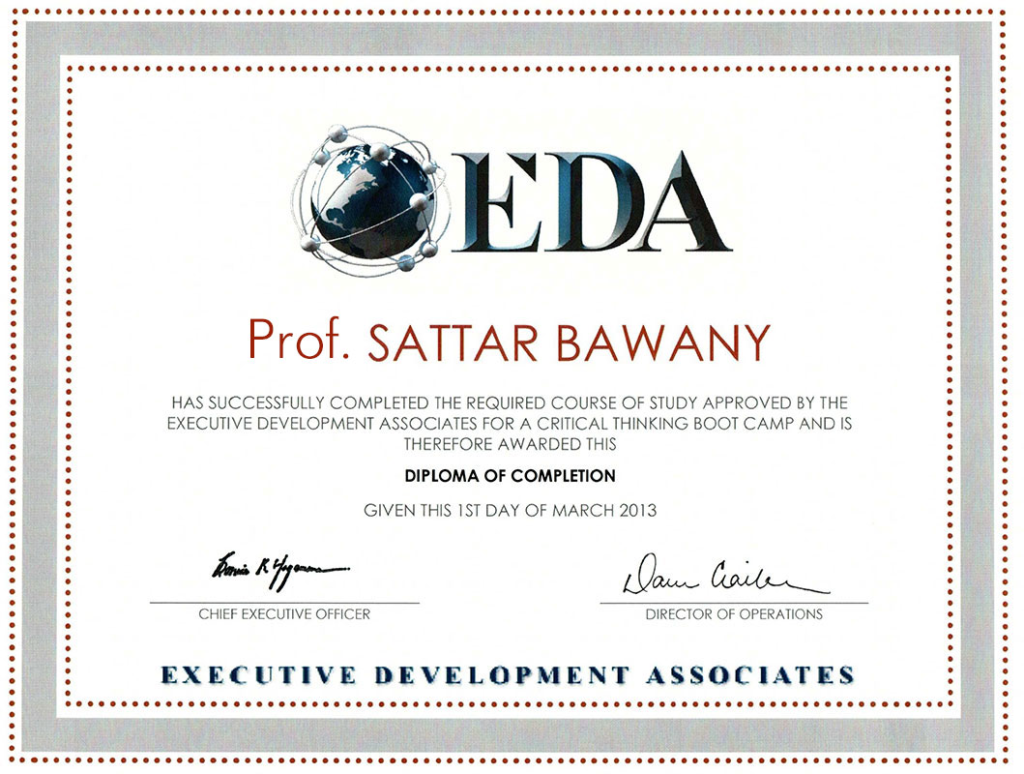
Privacy Overview
Click one of our representatives below to chat on WhatsApp or send us an email to [email protected]
Need help? Please contact +65 9002 3848

- Roxie’s Book
- Community Bright Spots!
- The Seven Core Values
- Videos with Message
(#86) A Model for Critical Thinking
What is common sense is not always common practice.
As a skill, critical thinking is a no-brainer; especially in a democratic society. Yet what is common sense is not always common practice. Today, let’s examine a model that will help us be more effective critical thinkers. The RED Model is an effective and powerful critical thinking tool that provides a systematic, step-by-step process for examining issues, events, people, and problems. It is eloquent in its simplicity. The graphic below clearly outlines the steps of the model.
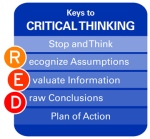
Watson-Glaser Critical Thinking Appraisal, Forms A/B (WGCTA). Copyright © 2007 NCS Pearson, Inc. Reproduced with permission. All rights reserved. “Watson-Glaser Critical Thinking Appraisal” is a trademark, in the US and/or other countries, of Pearson Education, Inc. or its affiliates(s).
For this blog post, let’s drill down and examine two vital concepts for this model–and for critical thinking in general.
#1. Assumptions . An assumption is an inference, an opinion, or a belief about (among other things) a person, place, or philosophical position. Whether it is a wild accusation heard during political campaigns, differing expectations of a supervisor and employee, or a misunderstanding between two friends, an assumption can get us into big trouble. We must separate fact from fiction.
- Example. Ricky is a first-year college student. In high school he was given second chances on all of his quizzes and tests. If he did not score well the first time, he could always take it again. (Some school districts call this “grade recovery.”) He assumed his professors would do the same. Imagine his shock when he received a “D” on his first test—and was told what he gets is what he keeps. No mulligans !

- Activity. Identify one assumption in your life. If you are a student, what assumption have you made about your abilities in Math or in English? If you have a job, what assumption do you hold about your supervisor? Once you have recognized the assumption, gather and evaluate information that supports and refutes your inference. Then draw an objective conclusion–and decide on your next step. You may wish to ask for objective feedback from a mentor.
Video recommendation for the week:
#2. Confirmation Bias. This happens when we lean toward or agree with only information that confirms already held personal beliefs. We tend to overlook or dismiss anything that may challenge or disprove our opinion.
- Example. Tim Tebow , quarterback for the Denver Broncos (and former star for the University of Florida ), has drawn legions of supporters and detractors about his ability to play in the NFL. Watch a talking head on television or read a social media post and you will generally find lots of confirmation bias. Those who love Tebow will overlook any shortcoming or misstep. Those who have continually criticized him ignore any good; they concentrate on the mistakes.
- Am I objective about this?
- Have I become so married to my opinion that I have become blinded to contrary evidence?
- How would I like it if this is how someone judged me?
- Activity. Examine one area of your life where you might be committing confirmation bias. It could be about political candidates you like (or dislike). It might be about a particular professor you have this semester. Maybe it involves a relationship that has become strained. Look for contrary evidence to your currently-held opinion. You may wish to ask for objective feedback from a mentor.
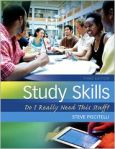
Enjoy your week—and H.T.R.B. as needed!
Thank you for taking the time to read my blog post. Please pass it (and any of the archived posts on this site) along to friends and colleagues. You can also follow me on Twitter, LinkedIn, and Facebook. If you get a chance, visit my Facebook page ( www.facebook.com/stevepiscitelli ) and click on the “LIKE” button. Also, if you have suggestions for future posts, leave a comment. Have a wonderful week!
© 2012. Steve Piscitelli and Steve Piscitelli’s Blog.
Share this:
About stevepiscitelli
24 responses to (#86) a model for critical thinking.
Heya outstanding website! Does running a blog similar to this take a massive amount work? I’ve very little expertise in computer programming however I was hoping to start my own blog soon. Anyway, should you have any suggestions or tips for new blog owners please share. I understand this is off subject nevertheless I just had to ask. Appreciate it!
Pingback: (#156) Putting Action Behind Your Intentions: A Call To Action! | Steve Piscitelli's Blog
Greetings! Very helpful advice in this particular article! It’s the little changes that will make the greatest changes. Thanks for sharing!
Excellent web site you’ve got here.. It’s difficult to find high quality writing like yours these days. I seriously appreciate individuals like you! Take care! !
We’re a group of volunteers and starting a new scheme in our community. Your web site offered us with valuable information to work on. You’ve done an impressive job and our entire community will be thankful to you.
Thanks for the feedback.
Can I simply say what a relief to uncover someone that genuinely understands what they’re talking about on the web. You actually realize how to bring a problem to light and make it important. More and more people must read this and understand this side of the story. I was surprised you’re not more popular because you most certainly possess the gift.
I was recommended this web site by my cousin. I am not positive whether or not this publish is written by him as no one else recognize such specific approximately my problem. You are amazing! Thanks!
Thanks for one’s marvelous posting! I actually enjoyed reading it, you are a great author.I will be sure to bookmark your blog and may come back later on. I want to encourage yourself to continue your great writing, have a nice weekend!
Pingback: (#191) React, Respond or Initiate? | Steve Piscitelli's Blog
Pingback: (#269) Yes And | Steve Piscitelli: Growth and Resilience
Pingback: (#292) A Blogger’s Retrospective: 2015 in Review | Steve Piscitelli--Growth and Resilience
Pingback: (#324) What Motivates Your Reasoning? | Steve Piscitelli
Pingback: (#344) A Blogger’s Retrospective: 2016 In Review | Steve Piscitelli
Pingback: (#393) Incompetent People Who Believe They Are Exceptional | The Growth and Resilience Network®
Pingback: (#397) A Blogger’s Retrospective: 2017 in Review | The Growth and Resilience Network®
Pingback: (#449) A Blogger’s Retrospective for 2018 | The Growth and Resilience Network®
Pingback: (Issue #483) Think in Reverse | The Growth and Resilience Network®
Pingback: (Issue #501) A Blogger’s Retrospective for 2019 | The Growth and Resilience Network®
Pingback: (Issue #553) A Blogger’s Retrospective for 2020 | The Growth and Resilience Network®
Pingback: (Issue #574) Did You Really See That? | The Growth and Resilience Network®
Pingback: (Issue #605) A Blogger’s Retrospective for 2021 | The Growth and Resilience Network®
Pingback: (Issue #626) Control What Happens After What Happens | The Growth and Resilience Network®
Leave a comment Cancel reply
Follow blog via email.
Enter your email address to follow this blog and receive notifications of new posts by email.
Email Address:
Search Blog Themes
Blog posts by month, recent posts.
- (Issue #642) The Gate that Separated a Community
- (Issue #641) Thought Leaders?
- (Issue #640) Two Faces Of Truth
- (Issue #639) To-Don’ts, What Ifs, and the Anxiety Loop
- (Issue #638) The Sword or the Flower
Top Posts & Pages
- (#194) Honor the Past. Celebrate the Present. Embrace the Future.
- (#86) A Model for Critical Thinking
- (#154) What Is Shaping Your Reality?
- (#325) Don’t Let Anyone Steal Your Lunch Money
- (#486) A Metaphor for Growth and Resilience
- (Issue #601) The Hypothesis of Generosity
- (#85) Study Skills: Do I Really Need This Stuff?
- #17 Is Multitasking a Myth?
- #18 Crab Pot Mentality!
- (#181) Knowing—Doing—Being
Copyright Notice ©
©2010-2022. Steve Piscitelli. All rights reserved. No part of this blog may be reproduced in any form without expressed permission from Steve Piscitelli. The Growth and Resilience Network®
A functioning community moves beyond listing and reciting core values. It shares and lives those values. And, it provides a safe place for its members to explore, stretch, learn, fail, and grow.
Steve is not a life coach and does not provide legal advice. He facilitates conversations and helps raise and confront important questions about what we do, why we do it, and how we do it.
- Already have a WordPress.com account? Log in now.
- Subscribe Subscribed
- Copy shortlink
- Report this content
- View post in Reader
- Manage subscriptions
- Collapse this bar
Defining Critical Thinking
- A Brief History of the Idea of Critical Thinking
- Critical Thinking: Basic Questions & Answers
- Our Conception of Critical Thinking
- Sumner’s Definition of Critical Thinking
- Research in Critical Thinking
- Critical Societies: Thoughts from the Past
Translate this page from English...
*Machine translated pages not guaranteed for accuracy. Click Here for our professional translations.
For full copies of this and many other critical thinking articles, books, videos, and more, join us at the Center for Critical Thinking Community Online - the world's leading online community dedicated to critical thinking! Also featuring interactive learning activities, study groups, and even a social media component, this learning platform will change your conception of intellectual development.

- Programs & Services
- Delphi Center
Ideas to Action (i2a)
- Paul-Elder Critical Thinking Framework
Critical thinking is that mode of thinking – about any subject, content, or problem — in which the thinker improves the quality of his or her thinking by skillfully taking charge of the structures inherent in thinking and imposing intellectual standards upon them. (Paul and Elder, 2001). The Paul-Elder framework has three components:
- The elements of thought (reasoning)
- The intellectual standards that should be applied to the elements of reasoning
- The intellectual traits associated with a cultivated critical thinker that result from the consistent and disciplined application of the intellectual standards to the elements of thought

According to Paul and Elder (1997), there are two essential dimensions of thinking that students need to master in order to learn how to upgrade their thinking. They need to be able to identify the "parts" of their thinking, and they need to be able to assess their use of these parts of thinking.
Elements of Thought (reasoning)
The "parts" or elements of thinking are as follows:
- All reasoning has a purpose
- All reasoning is an attempt to figure something out, to settle some question, to solve some problem
- All reasoning is based on assumptions
- All reasoning is done from some point of view
- All reasoning is based on data, information and evidence
- All reasoning is expressed through, and shaped by, concepts and ideas
- All reasoning contains inferences or interpretations by which we draw conclusions and give meaning to data
- All reasoning leads somewhere or has implications and consequences
Universal Intellectual Standards
The intellectual standards that are to these elements are used to determine the quality of reasoning. Good critical thinking requires having a command of these standards. According to Paul and Elder (1997 ,2006), the ultimate goal is for the standards of reasoning to become infused in all thinking so as to become the guide to better and better reasoning. The intellectual standards include:
Intellectual Traits
Consistent application of the standards of thinking to the elements of thinking result in the development of intellectual traits of:
- Intellectual Humility
- Intellectual Courage
- Intellectual Empathy
- Intellectual Autonomy
- Intellectual Integrity
- Intellectual Perseverance
- Confidence in Reason
- Fair-mindedness
Characteristics of a Well-Cultivated Critical Thinker
Habitual utilization of the intellectual traits produce a well-cultivated critical thinker who is able to:
- Raise vital questions and problems, formulating them clearly and precisely
- Gather and assess relevant information, using abstract ideas to interpret it effectively
- Come to well-reasoned conclusions and solutions, testing them against relevant criteria and standards;
- Think open-mindedly within alternative systems of thought, recognizing and assessing, as need be, their assumptions, implications, and practical consequences; and
- Communicate effectively with others in figuring out solutions to complex problems
Paul, R. and Elder, L. (2010). The Miniature Guide to Critical Thinking Concepts and Tools. Dillon Beach: Foundation for Critical Thinking Press.
- SACS & QEP
- Planning and Implementation
- What is Critical Thinking?
- Why Focus on Critical Thinking?
- Culminating Undergraduate Experience
- Community Engagement
- Frequently Asked Questions
- What is i2a?
Copyright © 2012 - University of Louisville , Delphi Center

- Search Search Search …
- Search Search …
Critical Thinking Models: A Comprehensive Guide for Effective Decision Making

Critical thinking models are valuable frameworks that help individuals develop and enhance their critical thinking skills . These models provide a structured approach to problem-solving and decision-making by encouraging the evaluation of information and arguments in a logical, systematic manner. By understanding and applying these models, one can learn to make well-reasoned judgments and decisions.

Various critical thinking models exist, each catering to different contexts and scenarios. These models offer a step-by-step method to analyze situations, scrutinize assumptions and biases, and consider alternative perspectives. Ultimately, the goal of critical thinking models is to enhance an individual’s ability to think critically, ultimately improving their reasoning and decision-making skills in both personal and professional settings.
Key Takeaways
- Critical thinking models provide structured approaches for enhancing decision-making abilities
- These models help individuals analyze situations, scrutinize assumptions, and consider alternative perspectives
- The application of critical thinking models can significantly improve one’s reasoning and judgment skills.
Fundamentals of Critical Thinking

Definition and Importance
Critical thinking is the intellectual process of logically, objectively, and systematically evaluating information to form reasoned judgments, utilizing reasoning , logic , and evidence . It involves:
- Identifying and questioning assumptions,
- Applying consistent principles and criteria,
- Analyzing and synthesizing information,
- Drawing conclusions based on evidence.
The importance of critical thinking lies in its ability to help individuals make informed decisions, solve complex problems, and differentiate between true and false beliefs .
Core Cognitive Skills
Several core cognitive skills underpin critical thinking:
- Analysis : Breaking down complex information into smaller components to identify patterns or inconsistencies.
- Evaluation : Assessing the credibility and relevance of sources, arguments, and evidence.
- Inference : Drawing conclusions by connecting the dots between analyzed information.
- Synthesis : Incorporating analyzed information into a broader understanding and constructing one’s argument.
- Logic and reasoning : Applying principles of logic to determine the validity of arguments and weigh evidence.
These skills enable individuals to consistently apply intellectual standards in their thought process, which ultimately results in sound judgments and informed decisions.
Influence of Cognitive Biases
A key aspect of critical thinking is recognizing and mitigating the impact of cognitive biases on our thought processes. Cognitive biases are cognitive shortcuts or heuristics that can lead to flawed reasoning and distort our understanding of a situation. Examples of cognitive biases include confirmation bias, anchoring bias, and availability heuristic.
To counter the influence of cognitive biases, critical thinkers must be aware of their own assumptions and strive to apply consistent and objective evaluation criteria in their thinking process. The practice of actively recognizing and addressing cognitive biases promotes an unbiased and rational approach to problem-solving and decision-making.
The Critical Thinking Process

Stages of Critical Thinking
The critical thinking process starts with gathering and evaluating data . This stage involves identifying relevant information and ensuring it is credible and reliable. Next, an individual engages in analysis by examining the data closely to understand its context and interpret its meaning. This step can involve breaking down complex ideas into simpler components for better understanding.
The next stage focuses on determining the quality of the arguments, concepts, and theories present in the analyzed data. Critical thinkers question the credibility and logic behind the information while also considering their own biases and assumptions. They apply consistent standards when evaluating sources, which helps them identify any weaknesses in the arguments.
Values play a significant role in the critical thinking process. Critical thinkers assess the significance of moral, ethical, or cultural values shaping the issue, argument, or decision at hand. They determine whether these values align with the evidence and logic they have analyzed.
After thorough analysis and evaluation, critical thinkers draw conclusions based on the evidence and reasoning gathered. This step includes synthesizing the information and presenting a clear, concise argument or decision. It also involves explaining the reasoning behind the conclusion to ensure it is well-founded.
Application in Decision Making
In decision making, critical thinking is a vital skill that allows individuals to make informed choices. It enables them to:
- Analyze options and their potential consequences
- Evaluate the credibility of sources and the quality of information
- Identify biases, assumptions, and values that may influence the decision
- Construct a reasoned, well-justified conclusion
By using critical thinking in decision making, individuals can make more sound, objective choices. The process helps them to avoid pitfalls like jumping to conclusions, being influenced by biases, or basing decisions on unreliable data. The result is more thoughtful, carefully-considered decisions leading to higher quality outcomes.
Critical Thinking Models
Critical thinking models are frameworks that help individuals develop better problem-solving and decision-making abilities. They provide strategies for analyzing, evaluating, and synthesizing information to reach well-founded conclusions. This section will discuss four notable models: The RED Model, Bloom’s Taxonomy, Paul-Elder Model, and The Halpern Critical Thinking Assessment.
The RED Model
The RED Model stands for Recognize Assumptions, Evaluate Arguments, and Draw Conclusions. It emphasizes the importance of questioning assumptions, weighing evidence, and reaching logical conclusions.
- Recognize Assumptions: Identify and challenge assumptions that underlie statements, beliefs, or arguments.
- Evaluate Arguments: Assess the validity and reliability of evidence to support or refute claims.
- Draw Conclusions: Make well-reasoned decisions based on available information and sound reasoning.
The RED Model helps individuals become more effective problem solvers and decision-makers by guiding them through the critical thinking process ^(source) .
Bloom’s Taxonomy
Bloom’s Taxonomy is a hierarchical model that classifies cognitive skills into six levels of complexity. These levels are remembering, understanding, applying, analyzing, evaluating, and creating. By progressing through these levels, individuals can develop higher-order thinking skills.
- Remembering: Recall information or facts.
- Understanding: Comprehend the meaning of ideas, facts, or problems.
- Applying: Use knowledge in different situations.
- Analyzing: Break down complex topics or problems into sub-parts.
- Evaluating: Assess the quality, relevance, or credibility of information, ideas, or solutions.
- Creating: Combine elements to form a new whole, generate new ideas, or solve complex issues.
Paul-Elder Model
The Paul-Elder Model introduces the concept of “elements of thought,” focusing on a structured approach to critical thinking. This model promotes intellectual standards, such as clarity, accuracy, and relevance. It consists of three stages:
- Critical Thinking: Employ the intellectual standards to problem-solving and decision-making processes.
- Elements of Thought: Consider purpose, question at issue, information, interpretation and inference, concepts, assumptions, implications, and point of view.
- Intellectual Traits: Develop intellectual traits, such as intellectual humility, intellectual empathy, and intellectual perseverance.
This model fosters a deeper understanding and appreciation of critical thinking ^(source) .
The Halpern Critical Thinking Assessment
The Halpern Critical Thinking Assessment is a standardized test developed by Diane Halpern to assess critical thinking skills. The evaluation uses a variety of tasks to measure abilities in core skill areas, such as verbal reasoning, argument analysis, and decision making. Pearson, a leading publisher of educational assessments, offers this test as a means to assess individuals’ critical thinking skills ^(source) .
These four critical thinking models can be used as frameworks to improve and enhance cognitive abilities. By learning and practicing these models, individuals can become better equipped to analyze complex information, evaluate options, and make well-informed decisions.
Evaluating Information and Arguments
In this section, we will discuss the importance of evaluating information and arguments in the process of critical thinking, focusing on evidence assessment, logic and fallacies, and argument analysis.
Evidence Assessment
Evaluating the relevance, accuracy, and credibility of information is a vital aspect of critical thinking. In the process of evidence assessment, a thinker should consider the following factors:
- Source reliability : Research and understand the expertise and credibility of the source to ensure that biased or inaccurate information is not being considered.
- Currency : Check the date of the information to make sure it is still relevant and accurate in the present context.
- Objectivity : Analyze the information for potential bias and always cross-reference it with other credible sources.
When practicing critical thinking skills, it is essential to be aware of your own biases and make efforts to minimize their influence on your decision-making process.
Logic and Fallacies
Logic is crucial for deconstructing and analyzing complex arguments, while identifying and avoiding logical fallacies helps maintain accurate and valid conclusions. Some common fallacies to watch out for in critical thinking include:
- Ad Hominem : Attacking the person making the argument instead of addressing the argument itself.
- Strawman : Misrepresenting an opponent’s argument to make it easier to refute.
- False Dilemma : Presenting only two options when there may be multiple viable alternatives.
- Appeal to Authority : Assuming a claim is true simply because an authority figure supports it.
Being aware of these fallacies enables a thinker to effectively evaluate the strength of an argument and make sound judgments accordingly.
Argument Analysis
Analyzing an argument is the process of evaluating its structure, premises, and conclusion while determining its validity and soundness. To analyze an argument, follow these steps:
- Identify the premises and conclusion : Determine the main point is being argued, how it is related and substance of the argument.
- Evaluate the validity : Assess whether the conclusion logically follows from the premises and if the argument’s structure is sound.
- Test the soundness : Evaluate the truth and relevance of the premises. This may require verifying the accuracy of facts and evidence, as well as assessing the reliability of sources.
- Consider counter-arguments : Identify opposing viewpoints and counter-arguments, and evaluate their credibility to gauge the overall strength of the original argument.
By effectively evaluating information and arguments, critical thinkers develop a solid foundation for making well-informed decisions and solving problems.

Enhancing Critical Thinking
Strategies for improvement.
To enhance critical thinking, individuals can practice different strategies, including asking thought-provoking questions, analyzing ideas and observations, and being open to different perspectives. One effective technique is the Critical Thinking Roadmap , which breaks critical thinking down into four measurable phases: execute, synthesize, recommend, and communicate. It’s important to use deliberate practice in these areas to develop a strong foundation for problem-solving and decision-making. In addition, cultivating a mindset of courage , fair-mindedness , and empathy will support critical thinking development.
Critical Thinking in Education
In the field of education, critical thinking is an essential component of effective learning and pedagogy. Integrating critical thinking into the curriculum encourages student autonomy, fosters innovation, and improves student outcomes. Teachers can use various approaches to promote critical thinking, such as:
- Employing open-ended questions to stimulate ideas
- Incorporating group discussions or debates to facilitate communication and evaluation of viewpoints
- Assessing and providing feedback on student work to encourage reflection and improvement
- Utilizing real-world scenarios and case studies for practical application of concepts
Developing a Critical Thinking Mindset
To truly enhance critical thinking abilities, it’s important to adopt a mindset that values integrity , autonomy , and empathy . These qualities help to create a learning environment that encourages open-mindedness, which is key to critical thinking development. To foster a critical thinking mindset:
- Be curious : Remain open to new ideas and ask questions to gain a deeper understanding.
- Communicate effectively : Clearly convey thoughts and actively listen to others.
- Reflect and assess : Regularly evaluate personal beliefs and assumptions to promote growth.
- Embrace diversity of thought : Welcome different viewpoints and ideas to foster innovation.
Incorporating these approaches can lead to a more robust critical thinking skillset, allowing individuals to better navigate and solve complex problems.
Critical Thinking in Various Contexts
The workplace and beyond.
Critical thinking is a highly valued skill in the workplace, as it enables employees to analyze situations, make informed decisions, and solve problems effectively. It involves a careful thinking process directed towards a specific goal. Employers often seek individuals who possess strong critical thinking abilities, as they can add significant value to the organization.
In the workplace context, critical thinkers are able to recognize assumptions, evaluate arguments, and draw conclusions, following models such as the RED model . They can also adapt their thinking to suit various scenarios, allowing them to tackle complex and diverse problems.
Moreover, critical thinking transcends the workplace and applies to various aspects of life. It empowers an individual to make better decisions, analyze conflicting information, and engage in constructive debates.
Creative and Lateral Thinking
Critical thinking encompasses both creative and lateral thinking. Creative thinking involves generating novel ideas and solutions to problems, while lateral thinking entails looking at problems from different angles to find unique and innovative solutions.
Creative thinking allows thinkers to:
- Devise new concepts and ideas
- Challenge conventional wisdom
- Build on existing knowledge to generate innovative solutions
Lateral thinking, on the other hand, encourages thinkers to:
- Break free from traditional thought patterns
- Combine seemingly unrelated ideas to create unique solutions
- Utilize intuition and intelligence to approach problems from a different perspective
Both creative and lateral thinking are essential components of critical thinking, allowing individuals to view problems in a holistic manner and generate well-rounded solutions. These skills are highly valued by employers and can lead to significant personal and professional growth.
In conclusion, critical thinking is a multifaceted skill that comprises various thought processes, including creative and lateral thinking. By embracing these skills, individuals can excel in the workplace and in their personal lives, making better decisions and solving problems effectively.
Overcoming Challenges
Recognizing and addressing bias.
Cognitive biases and thinking biases can significantly affect the process of critical thinking . One of the key components of overcoming these challenges is to recognize and address them. It is essential to be aware of one’s own beliefs, as well as the beliefs of others, to ensure fairness and clarity throughout the decision-making process. To identify and tackle biases, one can follow these steps:
- Be self-aware : Understand personal beliefs and biases, acknowledging that they may influence the interpretation of information.
- Embrace diverse perspectives : Encourage open discussions and invite different viewpoints to challenge assumptions and foster cognitive diversity.
- Reevaluate evidence : Continuously reassess the relevance and validity of the information being considered.
By adopting these practices, individuals can minimize the impact of biases and enhance the overall quality of their critical thinking skills.
Dealing with Information Overload
In today’s world, information is abundant, and it can become increasingly difficult to demystify and make sense of the available data. Dealing with information overload is a crucial aspect of critical thinking. Here are some strategies to address this challenge:
- Prioritize information : Focus on the most relevant and reliable data, filtering out unnecessary details.
- Organize data : Use tables, charts, and lists to categorize information and identify patterns more efficiently.
- Break down complex information : Divide complex data into smaller, manageable segments to simplify interpretation and inferences.
By implementing these techniques, individuals can effectively manage information overload, enabling them to process and analyze data more effectively, leading to better decision-making.
In conclusion, overcoming challenges such as biases and information overload is essential in the pursuit of effective critical thinking. By recognizing and addressing these obstacles, individuals can develop clarity and fairness in their thought processes, leading to well-informed decisions and improved problem-solving capabilities.
Measuring Critical Thinking
Assessment tools and criteria.
There are several assessment tools designed to measure critical thinking, each focusing on different aspects such as quality, depth, breadth, and significance of thinking. One example of a widely used standardized test is the Watson-Glaser Critical Thinking Appraisal , which evaluates an individual’s ability to interpret information, draw conclusions, and make assumptions. Another test is the Cornell Critical Thinking Tests Level X and Level Z , which assess an individual’s critical thinking skills through multiple-choice questions.
Furthermore, criteria for assessing critical thinking often include precision, relevance, and the ability to gather and analyze relevant information. Some assessors utilize the Halpern Critical Thinking Assessment , which measures the application of cognitive skills such as deduction, observation, and induction in real-world scenarios.
The Role of IQ and Tests
It’s important to note that intelligence quotient (IQ) tests and critical thinking assessments are not the same. While IQ tests aim to measure an individual’s cognitive abilities and general intelligence, critical thinking tests focus specifically on one’s ability to analyze, evaluate, and form well-founded opinions. Therefore, having a high IQ does not necessarily guarantee strong critical thinking skills, as critical thinking requires additional mental processes beyond basic logical reasoning.
To build and enhance critical thinking skills, individuals should practice and develop higher-order thinking, such as critical alertness, critical reflection, and critical analysis. Using a Critical Thinking Roadmap , such as the four-phase framework that includes execution, synthesis, recommendation, and the ability to apply, individuals can continuously work to improve their critical thinking abilities.
Frequently Asked Questions
What are the main steps involved in the paul-elder critical thinking model.
The Paul-Elder Critical Thinking Model is a comprehensive framework for developing critical thinking skills. The main steps include: identifying the purpose, formulating questions, gathering information, identifying assumptions, interpreting information, and evaluating arguments. The model emphasizes clarity, accuracy, precision, relevance, depth, breadth, logic, and fairness throughout the critical thinking process. By following these steps, individuals can efficiently analyze and evaluate complex ideas and issues.
Can you list five techniques to enhance critical thinking skills?
Here are five techniques to help enhance critical thinking skills:
- Ask open-ended questions : Encourages exploration and challenges assumptions.
- Engage in active listening: Focus on understanding others’ viewpoints before responding.
- Reflect on personal biases: Identify and question any preconceived notions or judgments.
- Practice mindfulness: Develop self-awareness and stay present in the moment.
- Collaborate with others: Exchange ideas and learn from diverse perspectives.
What is the RED Model of critical thinking and how is it applied?
The RED Model of critical thinking consists of three key components: Recognize Assumptions, Evaluate Arguments, and Draw Conclusions. To apply the RED Model, begin by recognizing and questioning underlying assumptions, being aware of personal biases and stereotypes. Next, evaluate the strengths and weaknesses of different arguments, considering evidence, logical consistency, and alternative explanations. Lastly, draw well-reasoned conclusions that are based on the analysis and evaluation of the information gathered.
How do the ‘3 C’s’ of critical thinking contribute to effective problem-solving?
The ‘3 C’s’ of critical thinking – Curiosity, Creativity, and Criticism – collectively contribute to effective problem-solving. Curiosity allows individuals to explore various perspectives and ask thought-provoking questions, while Creativity helps develop innovative solutions and unique approaches to challenges. Criticism, or the ability to evaluate and analyze ideas objectively, ensures that the problem-solving process remains grounded in logic and relevance.
What characteristics distinguish critical thinking from creative thinking?
Critical thinking and creative thinking are two complementary cognitive skills. Critical thinking primarily focuses on analyzing, evaluating, and reasoning, using objectivity and logical thinking. It involves identifying problems, assessing evidence, and drawing sound conclusions. Creative thinking, on the other hand, is characterized by the generation of new ideas, concepts, and approaches to solve problems, often involving imagination, originality, and out-of-the-box thinking.
What are some recommended books to help improve problem-solving and critical thinking skills?
There are several books that can help enhance problem-solving and critical thinking skills, including:
- “Thinking, Fast and Slow” by Daniel Kahneman: This book explores the dual process theory of decision-making and reasoning.
- “The 5 Elements of Effective Thinking” by Edward B. Burger and Michael Starbird: Offers practical tips and strategies for improving critical thinking skills.
- “Critique of Pure Reason” by Immanuel Kant: A classic philosophical work that delves into the principles of reason and cognition.
- “Mindware: Tools for Smart Thinking” by Richard E. Nisbett: Presents a range of cognitive tools to enhance critical thinking and decision-making abilities.
- “The Art of Thinking Clearly” by Rolf Dobelli: Explores common cognitive biases and errors in judgment that can affect critical thinking.
You may also like

Great Courses vs Coursera
There are hundreds of online educational platforms. Some are tiny, servicing small niches, and others try to educate pretty much everybody under […]
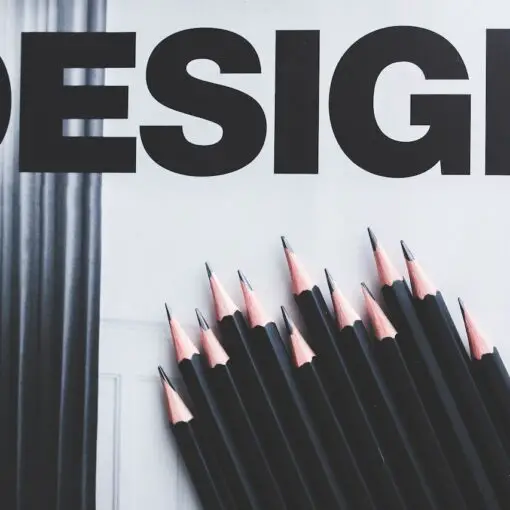
Design Thinking vs Critical Thinking: Unraveling the Key Differences
Design thinking and critical thinking are two approaches that individuals and organizations use to solve problems and make decisions. Design thinking, a […]

Thinking Vs. Critical Thinking: What’s the Difference?
Thinking and critical thinking do not sound that different in nature. After all, they both include the verb thinking, and therefore, imply […]

Analytical Thinking vs Problem Solving: A Comprehensive Comparison
Analytical thinking and problem solving are crucial skills in various aspects of life, including personal and professional situations. While they may seem […]

- Productivity
- Thoughtful learning
Critical thinking models: definition, benefits, and skills

In the age of memes and misinformation, critical thinking is a must. It's a crucial skill to differentiate between what may be true or false and develop (and explain) reasons for your beliefs.
The hardest part of critical thinking is knowing when to do it. Most of the time, it's easier to accept things as fact rather than to dig deeper to reach a conscious conclusion. This happens for various reasons. The most common being the ease of following the crowd and the fact it would be rather cumbersome to think critically about every single thing in the world!
How then do we know what to think critically about? How do we get the right answers, and how do we know they're correct? This is where a critical thinking model comes in. In this article, we’ll share three critical thinking models, essential critical reasoning skills, and why improving your critical thinking process is a good idea.
What Is Critical Thinking?
"Critical thinking is reasonable and reflective thinking focused on deciding what to believe or do.” This is how renowned professor and author Robert Hugh Ennis defines it. Put another way, the definition of critical thinking is careful consideration and analysis of information to reach a rational conclusion or decision. We practice critical thinking to inform—and own—our beliefs and actions and ensure they truly align with our values and intentions.
That said, critical thinking is not our natural way of thinking . Most of us are never aware of our brain's metacognitive actions, conceptualizations, or synthesis. Instead, we rely on habits, patterns, and competencies from past experiences to understand and interact with the world. While this may save us time and effort, it doesn’t always provide the best results—and often results in fallacies.
What Are Critical Thinking Models?
A critical thinking model provides the structure for practicing this type of thinking. It helps us notice our own thinking biases and allows us to try viewing the world objectively all while providing guidelines for asking the right questions, reaching logical conclusions, and explaining how we did it.
3 Critical Thinking Models That Are Useful in Everyday Life
There are thousands of critical thinking models for almost any subject or discipline. Let’s take a look at three models of critical thinking we find useful in everyday life.
Proximate vs. Root Cause
The proximate vs. root cause critical thinking model encourages people to discover the primary cause of an event. A proximate cause is closest to the observed result or immediately responsible for it. In contrast, the root cause is the actual cause of the result. Both are causes of the event, but the root cause is the main cause, while the proximate cause is the immediate next cause.
This mental model forces you to look beyond obvious reasons to determine the core reason for impact. It helps with innovative problem-solving, so instead of relying on “Band-Aid solutions” or improving currently-existing solutions, you uncover the root of the matter and create something altogether new.
Example: You've gained a lot of weight since March 2021. Upon investigation, you may draw the following inferences:
- Proximate cause: You burn fewer calories than you consume (moving less and eating more due to boredom or food accessibility), thus the weight gain.
- Root cause: Your habits changed because of the lifestyle change from working at the office to working from home.
When you know the root cause of an issue, you can begin to deal with it to reduce the odds of recurrence. In this case, change your habits to fit the work-from-home lifestyle better. The proximate vs. root cause model improves your critical thinking ability and helps formulate a proper understanding of issues before working on them.
Cognitive Bias
Cognitive bias is a tendency to think in ways that can lead to deviations from rationality and objectivity. We all have cognitive biases. This error in thinking happens because of our tendency to process and interpret information swiftly, which can affect our decision-making and the eventual outcome of a situation.
Example: A soccer player scores a goal. In his mind, that means he's a great player. But if he had missed, he would reason that it was because the grass was wet. In self-serving bias, the tendency is to claim more responsibility for successes than failures. In other words: if there's a success, it's because I did something right. If there's a failure, it's something else's fault, not mine.
When you only pay attention or engage with news sources, stories, and conversations that confirm your worldview, you limit yourself from other perspectives and opinions that may be good for you without realizing it. Being aware of your own cognitive bias allows you to create some distance between how you expect the world to be and become more open to how it actually is on any given day.
The human brain is a powerful machine, but it has its limitations. One of them is neglecting facts and evidence to make sense of the world quickly and easily. This habit of mind may allow us to make faster decisions, but it doesn't serve us optimally. When unchecked, cognitive biases hinder fair-mindedness, inclusion, and impartiality.
Hanlon's Razor
"Never attribute to malice that which is adequately explained by incompetence."
Hanlon's Razor promotes good thinking and teaches us not to assume the worst intentions about people's actions without investigation. It helps regulate our emotions and improve relationships and decision-making. It also helps us develop empathy by giving others the benefit of the doubt and not assuming negative intent with evidence.
Example: You get to work earlier than usual on a Monday morning and notice your things scattered around. This must mean someone used your office! You immediately think a certain coworker did this to annoy you. But when you pause and consider, you realize that a coworker may have used your office during the weekend because it was vacant and they forgot their keys at home.
The stories we tell ourselves about why things happen the way they do are rarely true. It's worth spending some time to objectively view situations and choose a positive narrative that leads to better outcomes in our mental and emotional health and relationships.

Be the first to try it out!
We're developing ABLE, a powerful tool for building your personal knowledge, capturing information from the web, conducting research, taking notes, and writing content.
Critical Thinking Skills and Their Benefits
Critical thinking skills are useful for everyone. They help us think coherently and make advancements with our personal and professional goals. Some of the benefits you can gain from critical thinking are:
- Greater reflective thinking and self-awareness
- Ability to audit new information
- Better interpersonal relationships
- More creative thinking and problem-solving skills
- Expanded open-mindedness
- Improved communication and presentation skills
- Freedom from past experiences and attachments
To gain these types of benefits, it’s important to practice the critical thinking skills listed below.
1. Observation
Observation is the foundation for critical thinking. It’s the ability to notice and predict opportunities, problems, and solutions. Taking the time to observe helps you process information better. Positive habits like meditating, journaling, and active listening will help you improve your observation skills.
2. Analysis
After observing, it's time to analyze the information. Analyzing helps you gain a clearer grasp of the situation at hand. Ask questions that help you get a clearer picture of the subject and get to the root cause or reason. For example, if you’re analyzing a controversial tweet you read, you may ask questions such as:
- Who wrote this?
- What is it about?
- When was it written?
- Why did they write it? Do they have a hidden agenda?
- How sound is the premise?
- What if this tweet was altered to send a misleading message?
These questions help you break your subject into rational bits and consider the relationship between each one and the whole.
3. Inference
Inference is the ability to draw conclusions from the information you've analyzed and other relevant data. It's a higher-level critical thinking skill that helps you reach careful decisions rather than hastily drawn (and likely biased) conclusions.
4. Communication
Once you have a solid foundation for your beliefs, communicating your theory is the next essential part of critical thinking. Share your point of view and get feedback from others to know if it holds up. You can improve your communication skills by participating in thematic forum discussions and sharing your research and insights with others in your community, both online and offline.
5. Problem-solving
Problem-solving is one of the main reasons for critical thinking. The end goal of critical thinking is using your new conclusion to close gaps and solve problems. You start by identifying your viewpoint, analyzing relevant information, and deciding on the right solution for a particular scenario. You can improve your problem-solving skills by self-learning the subject at hand and considering hidden, alternative outcomes.
Tap Into the Power of Critical Thinking
Becoming a critical thinker is challenging but oh-so worth it. It leads to continuous growth in all areas of your life: better relationships, confidence, and problem-solving skills. Critical thinking helps us overcome familiar patterns and ways of thinking, opening us to new perspectives.
To improve your critical thinking, spend time honing the five crucial critical thinking skills: observation, analysis, inference, communication, and problem-solving. Have fun with the process as you pay more attention to your beliefs and experiences and other people's perspectives and experiences as well.
You can use critical thinking models to guide your critical thinking journey, prompting you to realize when to pause and ask questions and when to accept the answers you have and move on. For example, in today’s age of misinformation, you may learn that it’s almost always counterproductive to engage with news and information from unknown sources.
Critical thinking is needed to remove scales from our eyes and improve our knowledge and experience of the world, but it’s also important to know when to turn our attention to focus on a new subject and move on.
Improve your critical thinking with ABLE
Ask better questions and get better answers with ABLEs integrated web search, annotation and note-taking features. Check how ABLE helps you to improve your critical thinking.
We hope you have enjoyed reading this article. Feel free to share, recommend and connect on Twitter: https://twitter.com/meet_able 🙏

Straight from the ABLE team: how we work and what we build. Thoughts, learnings, notes, experiences and what really matters.
Read more posts by this author
follow me :
Simplifying complexity: How to conquer clarity and brevity
How to organize information: the best methods for lifelong learning.

What is abstract thinking? 10 activities to improve your abstract thinking skills

5 examples of cognitive learning theory (and how you can use them)
0 results found.
- Aegis Alpha SA
- We build in public
Building with passion in

Pearson’s Red Critical Thinking PowerPoint Diagram
ADVERTISEMENT
This free Critical Thinking PowerPoint Diagram is inspired by the Pearson’s RED Critical Thinking model.
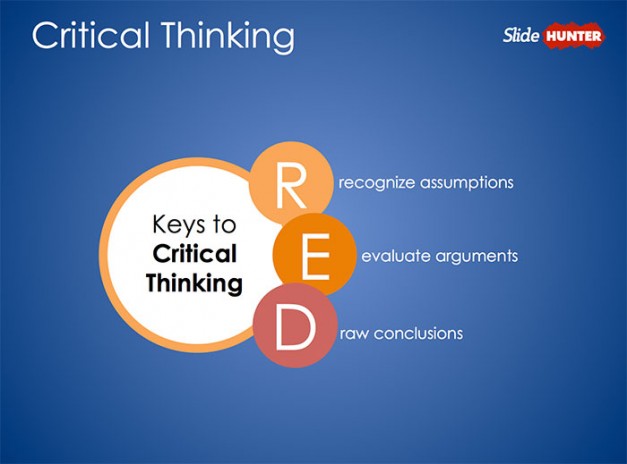
The Pearson’s RED Critical Thinking model defines a path for understanding how critical thinking works and helps toward developing each of the essential skills. It is composed by the following components: Recognize assumptions (gather information, listening to what people say, etc.), Evaluate Arguments and finally Draw the conclusions.
People having the Recognize Assumptions skills have an ability to separate facts from opinion. Questioning assumptions helps to reveal information gaps and then examining the assumptions through the eyes of different people and different viewpoints.
People with Evaluate Arguments skills can analyze the information objectively and accurately.
Finally, people who posses the Draw Conclusions skills are able to bring diverse information together and arrive to conclusions from available evidence.
You can use this PowerPoint diagram to make presentations on Critical Thinking Skills or exercises for courses.
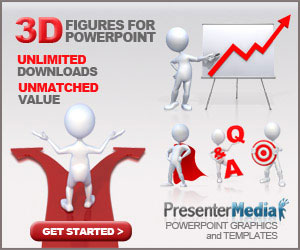
Browse Templates
- Best PowerPoint Templates
- Accounting & Finance
- Corporate Strategy
- Health & Medical Services
- Entertainment
Popular Topics
Related presentation templates.
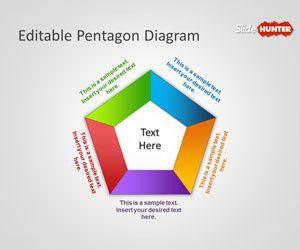
Editable Pentagon Diagram for PowerPoint
A simple but creative pentagon diagram template for PowerPoint & Google Slides presentations.

Free Horizontal Process Diagram with 5 Steps
Creative 5-step horizontal process flow PowerPoint template, perfect for showcasing business models or processes in a clear and engaging manner.
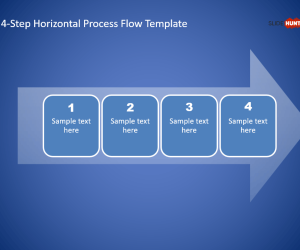
Free Horizontal Process Diagram with 4 Steps
Visually appealing 4-step horizontal process flow PowerPoint template, perfect for showcasing business models or processes in a clear and engaging manner.
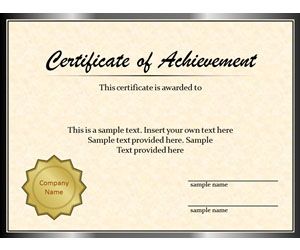
Diploma Template for PowerPoint
Free Diploma Template for PowerPoint and Google Slides suitable for awards, certificates, and educational presentations; editable with ‘Certificate of Achievement’ text.
Subscribe to SlideHunter
Sign up with your social account.
- Download at maximum speed
- Less ads on pages
- Hundreds of templates
Don't have a social account? Click here to Sign up with your email address instead

Prioritization Methods and Techniques – Part 2: MoSCoW Method
In my previous article, Prioritization Methods and Techniques - Part 1: Why Prioritize and the Kano Model , I talked about the need to prioritize and the Kano model as a prioritization method. In this second article in the series on prioritization methods and techniques, I will discuss the MoSCoW method.
The MoSCoW method is a highly widespread prioritization method which was popularized by Dynamic Systems Development Method (DSDM). The term MoSCoW has nothing to do with the capital of Russia. It is an acronym derived from the first letter of each of four prioritization categories – Must have, Should have, Could have and Won’t have.[1] The two “O” are added to make the word pronounceable.
Must have: This category contains requirements or features that are absolutely mandatory. Those are fundamental to the system (being a product or a service). If any of them are neglected, the system will certainly not work or will have no value for the customer.
Should have: These features are important, ideally, we should have them for the system to work correctly. If they are not there, a workaround may be possible, but it can be costly or cumbersome. Yet, they are not mandatory and therefore do not have the highest priority. Simply put, they don’t have much impact on delivery success right now, though they must be implemented soon enough (after the “must-haves”).
Could have: These are useful additions (often small-scale improvements) that add tangible value. These are “nice-to-have” requests. In general, they do not take considerable resources, but they are not essential to implement either. Their absence won’t affect almost anything, or at least wouldn’t impact the release negatively.
Won’t have (sometimes also known as “would like to have, but not this time”): These items are not worth the investment (of time, money, energy) and are unlikely to make the cut (at least not in the near future). These requirements are of the lowest importance and can be easily omitted (definitely considered out of scope for the first release) or rescheduled for future releases.
When prioritizing requirements in a project, DSDM recommends no more than 60% effort for “must-haves” requirements and a sensible pool of “could-haves”, usually around 20% effort (see Figure 1 below). Anything that is higher than 60% effort for the “must-haves” poses a risk to the success and predictability of the project, unless the environment and the used technology are well understood, there are minimal external risks/dependencies and the team is experienced and well established. Note that we are talking about a balance based on estimated effort of requirements (i.e. the expected time it takes to implement the prioritized features) and not total number of requirements. When calculating effort for a specific timeframe (e.g. first release), “won’t haves” are excluded, as they are considered out of scope for this timeframe.[2]
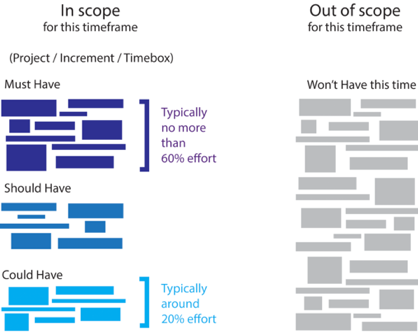
Figure 1: Balancing priorities using the MoSCoW prioritization technique (recommendation by DSDM[2])
Practical example
Let’s take a simple practical example. How can you categorize the features required to manufacture a child’s bicycle?
Must have: two wheels ; a frame
Should have: brakes for safe stopping; pedals; ability to adjust the saddle to accommodate growth; safety cover for the chain; stabilizers or the ability to fit them when needed (the last two features can also be classified as “could-haves” depending how essential they are for the child/parents)
Could have: bell or horn to alert others in proximity; attractive color of the bike; front suspension; Presta valves for inflating tires
Won’t have: valve caps to cover the tires valve; Bluetooth bike speaker
Even though it may seem strange not to have the pedals and the brakes in the “must have” category, in reality they are not mandatory for a child’s bike. By definition a bike is two-wheeled transportation device, so it must certainly have two wheels and a frame to link the wheels together, but everything else is subject to discussion and negotiation. For example, small kids can learn to ride a bike by simply using their feet, so no pedals and brakes are really needed. This simple example also shows that there is often a disconnect between expectations and requirements. People often have high level of expectations, but high expectations are different from must-have requirements which are mandatory and non-negotiable.
Let’s now look at the advantages and disadvantages of the MoSCoW method.
Pros of MoSCoW
- Simplicity. The MoSCoW method is one of the simplest prioritization techniques. It does not require searching for detailed data or making complicated calculations. So, it is easy to master and use because it is based on simple principles. Using this prioritization scheme in a product management context promotes mutual understanding between product people (product managers and product owners) and stakeholders. It is also a great method to resolve conflicts and to bring stakeholders to consensus. Prioritizing work using MoSCoW is fast and transparent.
- Agility for flexible scheduling and implementation. Since this prioritization method has no strict time limits for the implementation, except for the “must-have” category (items there should always go first and be implemented as soon as possible), it allows for flexible implementation timeframes per feature. Therefore, a team can easily adjust feature deliveries or releases on favorable terms based on agreement with customers/stakeholders.
Cons of MoSCoW
The MoSCoW technique is very simple, but such simplicity comes with some pitfalls.
- The technique lacks a clear consistency of implementation and lacks specific planning per feature. Even though priorities can be easily and quickly set, the MoSCoW method prioritizes the backlog items in four categories (in a similar fashion to the Kano model, covered in my previous article, which also prioritizes features in different categories), so it does not introduce any sequencing of features/backlog items and lacks specific planning. This makes it quite challenging for product people to decide on the exact priority of a feature compared to another one within the same category. At the end of the day, this drawback might put the entire release at risk.
- MoSCoW classification rules can be subjective and this creates imbalance between the absolutely required (must have or mandatory) and slightly desirable. Often, the blurred lines between categories make it hard to decide in which category a feature should go into, specifically when we talk about “must-have” and “should-have” lists. But it is sometimes also the case between “should-haves” and could-haves”. This happens due to the subjectivity of requirements. Therefore, features or stories allocated to the different categories should be approached with great thought and care and the chosen categorization should be agreed with (or well explained to) all stakeholders.
When to use the MoSCoW method
The MoSCoW method is probably the simplest and most widespread prioritization scheme for new product development, and more specifically for small products. But as we saw above, this technique also has its disadvantages and is not always effective. For instance, if you have a complicated backlog with many time-sensitive releases, consider choosing other prioritization method or complementing MoSCoW with another more accurate or comprehensive technique.
On the other hand, it is quite reasonable to use MoSCoW when prioritizing work for small (and not too complex) products, which does not have many technical limitations. The MoSCoW requirements help product people and teams take a strategic, orderly approach to prioritization. This method is great for avoiding wasted time, arguments and misdirection.
In my next article I will talk about the Eisenhower matrix. Meanwhile, if you want to know more about prioritizing using the MoSCoW method, please feel free to contact me.
About this article or just curious about working at BlinkLane? Contact Martin or take a look at our open vacancy .
References:
[1] Griffiths, M. (2012). PMI-ACP Exam Prep (2nd ed.). RMC Publications Inc.
[2] Agile Business Consoritum (n.d.). Chapter 10: MoSCoW Prioritisation. Retrieved from https://www.agilebusiness.org/page/ProjectFramework_10_MoSCoWPrioritisation
You are using an old version of Internet Explorer. We recommend updating your browser for more security, comfort and the best experience on this site. Close ×

IMAGES
VIDEO
COMMENTS
Everyone inherently experiences some degree of subconscious bias in their thinking. Critical thinking skills can help an individual overcome these and separate out facts from opinions. The Watson Glaser critical thinking test is based around the RED model of critical thinking: • Recognize assumptions. This is all about comprehension.
The Elements of the "R.E.D." Model of Critical Thinking Pearson has developed the following RED model—Recognize assumptions, Evaluate arguments, and Draw conclusions as a way to view and apply critical thinking principles when faced with a decision ( Chartrand, Ishikawa, and Flander 2018 ).
We teach critical thinking with the RED Model, introduced in Pearson's Watson-Glaser II Critical Thinking Appraisal, the most widely-used assessment of critical thinking in business today: R ...
Based on 80+ years of research with the Watson-Glaser II Critical Thinking Appraisal assessment, Pearson's RED Model of Critical Thinking lays out a path for...
Appraising Your Critical Thinking. • Apply Your Thinking Styles and the RED Model Process to a Real Work Situation. American Management Association; 1601 Broadway; New York, NY 10019. 7827 04/22.
The R. E. D. Model Critical thinking is the ability to think clearly and rationally. It includes the ability to engage in reflective and independent thinking. A good critical thinker is able to do the following : Fortunately. critical thinking can be taught. TalentLens from Pearson has developed the following RED Model — Recognise Assumptions.
𝐕𝐈𝐃𝐄𝐎𝐒 𝐒𝐄𝐑𝐈𝐄𝐒 𝐎𝐍 𝐃𝐈𝐒𝐑𝐔𝐏𝐓𝐈𝐕𝐄 𝐋𝐄𝐀𝐃𝐄𝐑𝐒𝐇𝐈𝐏 & 𝐂𝐎𝐍𝐓𝐄𝐌𝐏𝐎𝐑𝐀𝐑𝐘 ...
This research uses the Grounded Theory method, which aims to find new theories or to empower existing theories. The RED Model's critical thinking skills framework has three main indicators including (1) Recognize Assumptions; (2) Evaluate Arguments; and (3) Draw Conclusions. The RED Model's critical thinking skills framework and its indicators ...
Figure 4: The "R.E.D." Model of Critical Thinking Reference: Bawany, S, (2023) " Leadership in Disruptive Times: Negotiating the New Balance " (Business Expert Press LLC, New York, NY) Pearson has developed the following RED Model - Recognize assumptions, Evaluate arguments, Draw conclusions - as a way to view and apply Critical ...
The RED model for developing critical thinking skills is a process recommended by Pearson and TalentLens to help two things: Improve the standard of critical thinking within your business. Naturally, this will result in improved critical thinking test scores and pass marks, but it also helps grow your businesses thinking capabilities. The RED ...
This research uses the Grounded Theory method, which aims to find new theories or to empower existing theories. The RED Model's critical thinking skills framework has three main indicators ...
Today, let's examine a model that will help us be more effective critical thinkers. The RED Model is an effective and powerful critical thinking tool that provides a systematic, step-by-step process for examining issues, events, people, and problems. It is eloquent in its simplicity. The graphic below clearly outlines the steps of the model.
Critical thinking skills are one of the core and fundamental skills that are needed in 21st-century learning. In education in Indonesia, critical thinking skills are contained in the 2013 Curriculum as one of the goals of education. This article provides insight into critical thinking skills and discusses the concept of the RED Model's critical thinking skills and its indicators in measuring ...
Understanding Critical Thinking We oper ate in a continually changing w or kplace, w her e lar ge volumes of infor mation ar e r apidly exchanged. ... T he example below illustr ates each element of the R E D model of cr itical thinking. Critical Thinking in Action S uppose a char ismatic gentleman offer ed you a r isky, but potentially r ew ar ...
Critical thinking is, in short, self-directed, self-disciplined, self-monitored, and self-corrective thinking. It presupposes assent to rigorous standards of excellence and mindful command of their use. It entails effective communication and problem solving abilities and a commitment to overcome our native egocentrism and sociocentrism.
Critical thinking is that mode of thinking - about any subject, content, or problem — in which the thinker improves the quality of his or her thinking by skillfully taking charge of the structures inherent in thinking and imposing intellectual standards upon them. (Paul and Elder, 2001). The Paul-Elder framework has three components:
The Paul-Elder Model introduces the concept of "elements of thought," focusing on a structured approach to critical thinking. This model promotes intellectual standards, such as clarity, accuracy, and relevance. It consists of three stages: Critical Thinking: Employ the intellectual standards to problem-solving and decision-making processes.
RED Model's critical thinking skills which consist of (1) Recognize Assumptions; (2) Evaluate Arguments; (3) Draw Conclusions, as an effort to apply and measure critical thinking skills. This model is believed to be very helpful in developing critical thinking skills. Fig. 3: RED Model of Critical Thinking Skills Source: [10]
Critical thinking skills are useful for everyone. They help us think coherently and make advancements with our personal and professional goals. Some of the benefits you can gain from critical thinking are: Greater reflective thinking and self-awareness. Ability to audit new information.
The Pearson's RED Critical Thinking model defines a path for understanding how critical thinking works and helps toward developing each of the essential skills. It is composed by the following components: Recognize assumptions (gather information, listening to what people say, etc.), Evaluate Arguments and finally Draw the conclusions.
Garrison D. R. (1991). Critical thinking and adult education: A conceptual model for developing critical thinking in adult learners. International Journal of Lifelong Education, 10, 287-303. Crossref. Google Scholar. Habermas J. (1984). The theory of communicative action, Volume 2: Lifeworld and system.
The purpose behind the Russian-American Seminar on Critical Thinking was to bring together librarians from both countries to provide an East-West perspective on the issue of critical thinking. This document presents 16 papers from the seminar as well as introductory remarks from a Russian and an American participant. Papers are as follows: "The Young Adult and the Library" (Irina Bakhmutskaia ...
In this second article in the series on prioritization methods and techniques, I will discuss the MoSCoW method. The MoSCoW method is a highly widespread prioritization method which was popularized by Dynamic Systems Development Method (DSDM). The term MoSCoW has nothing to do with the capital of Russia. It is an acronym derived from the first ...